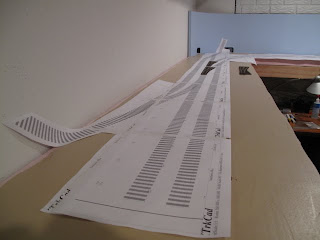

Well, I've made a little more progress since Christmas. I received an inexpensive airbrush as a gift, so I decided the first project I should tackle is weathering the track. I followed the technique spelled out by Lance Mindhiem in the Model Railroad Magazine special track edition. I started off with a light spray over everytning with Polyscale light gray thinned way down with isopropyl alcohol. After this dried I went back over the ties with a very dilute wash of artis oils burnt umber thinned with mineral spirits. This went on a lot easier than I feared, and actually looked pretty darn good when I finished. It really brings out the detail in the Micro Engineering track and turnouts. I finished things up by using a Floquil weathering paint pen, rust color, and drew along the visible side of each rail. The little bit that spilled down onto the tie just looks like the tie plates. Again, this went very quickly and looks pretty good. After a bad experience trying to clean the railhead with a paper towel soaked in alcohol, I followed some advice I had run across somewhere and soaked a couple small scraps of pine in alcohol and used that to clean the rail head. It worked great and didn't bother the paint on the side of the rail. Next step will be to try my hand at laying ballast!
The other minor thing I did was to rip some 1/8" masonite down to 6" and make a fascia to go around the perimiter of the layout. 1/4" would have been better (stiffer), but this is what I had lying around, and it will work fine for something this small. Not sure if I will paint it eventually or not, but even in the natural dark brown color it really improves the looks of things by hiding the edge of the foam and the wood.



























